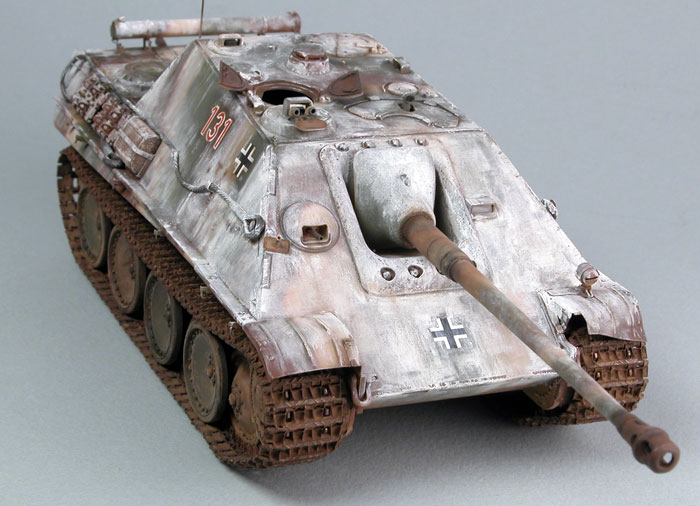For me it's more about historical accuracy than asthetics. What is the purpose of camouflage? To reduce detection.
http://en.wikipedia.org/wiki/Theory_of_camouflage
Whitewash should be applied in such a way as to blend into the environment the vehicle is operating in.
If a vehicle is operating in wide open areas with a full blanket of snow then a solid white application overall makes sense. An example of this includes Tigers shipped directly from the factory for use in the third battle of Kharkov. Even in this configuration whitewash should not appear pure white. Since this was thinned and applied over the underlying paint one can expect some of the underlying color to show through in spots. In addition over time the whitewash will wear off as well as become dirty.
If a vehicle is operating in a forested environment or an area with only light snow coverage a patchy application of whitewash would be more effective than a solid application.
Keep in mind that the German supply situation was strained at the best of times so whitewash was usually in short supply and units often had to improvise. This would also encourage frugal use resulting in very thin coverage.
Now lastly where was it used? There are countless examples of it's use in the east including the last major offensive operations in Hungary (Konrad I,II,III). The west; however, is another story. While there appears to be some evidence to support whitewash use at the tail end of the Battle of the Bulge and subsequent defensive battles in Germany it is far from conclusive. Keep in mind during the opening phases of this battle there was not snow on the ground so it would not make sense to apply whitewash.
Here is an example of what I like whitewash to look like:
 The few K&C examples I have are the whitewashed rappen, the solid white flakpanzer and my least favourite the yellowish white on the ketterand.. or are there other examples of a "nice winter white scheme"???
The few K&C examples I have are the whitewashed rappen, the solid white flakpanzer and my least favourite the yellowish white on the ketterand.. or are there other examples of a "nice winter white scheme"??? 



